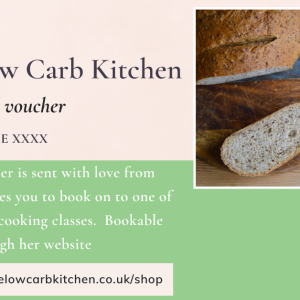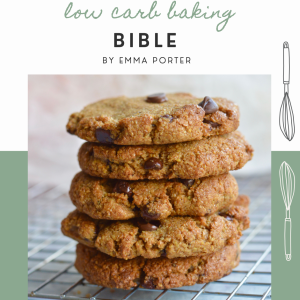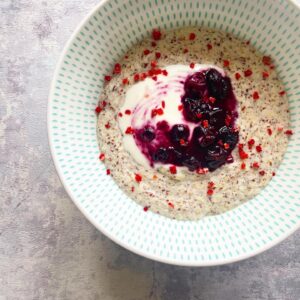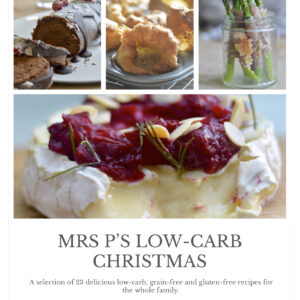I have been asked on many occasions what are the most important low carb kitchen cupboard staples, so below I have compiled a list of the foods I use on a regular basis. Eating low carb should not be about restricting yourself, portion control OR counting calories. It is a diet rich in protein, vegetables and healthy fats. It is lower in carbohydrates and free from anything heavily processed. It is not a diet, you are not starving yourself or eating just one thing every three hours, it’s not dangerous for your health and you are not going to pass out for lack of carbs!
For some people, intermittent fasting works really well and can help with blood glucose control and weight loss / control. However, for many, 3 meals a day is preferred, so I hope this list helps.
In terms of where you can buy some of the more “unusual” ingredients, I would always suggest bulk buying through websites such as Grape Tree online or Amazon. You can buy some fantastic meat boxes which are very reasonably priced, Check out your local veg show and butcher or farm shop. Especially during this current pandemic, many are doing free delivery. Facebook is a great place to start. Look on their pages and make contact.
You can always pick up nut flours and coconut oil from supermarkets. Aldi and Lidl are brilliant for it and they are very reasonably priced. Eating well and low carb doesn’t have to break the bank, I know it’s hard not to go crazy when you first start, eating all the expensive goodies like macadamia nuts, nut butters and grass-fed beef but you just need to take a step back, write a shopping list, a meal plan for the week and be savvy with your budget.
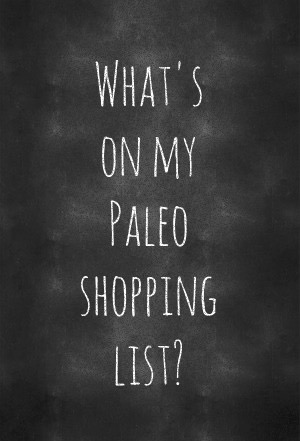
A little outline with some ideas:
Nuts and Seeds
- Macadamia Nuts
- Hazel Nuts
- Chestnuts
- Cashew Nuts
- Almonds
- Chia Seeds
- Pumpkin Seeds
- Sesame Seeds
Fats
- Avocados
- Avocado oil
- Olive oil
- Coconut oil
- Clarified butter (ghee)
- Nut butters and Seed butters (Make your own or buy from the supermarket or online. Stick to organic brands that only contain ONE ingredient- the nut itself! Brands like Meridian, Pip and Nut, Biona, Keen and My Protein are all great. They are amazing in baking, have a teaspoon as a snack, enjoy in my famous nut butter curry, dip crudités in them or drizzle with some chilli and seasalt on a salad- tahini is amazing for this with a little olive oil and lemon)
- Nut oils (walnut, macadamia)
- Coconut flesh
- Coconut Milk With coconut milk always try to buy premium quality coconut milk with at least 60% coconut extract, free from added preservatives and stabilisers.
- Full fat dairy. Whole milk, cream, full fat yoghurt etc. Just be mindful that if you go low fat, you will be increasing your carbs and need to adjust insulin, if you are diabetic.
Eggs
Eggs are NOT DAIRY. Enjoy them for breakfast, lunch or dinner and don’t limit yourself to 2 a week. Contrary to belief eggs are one of the most nutritious, affordable, protein packed sources and are known as a “perfect food”, they are very very good for us. The white provides us with protein, the yolk contains all the vitamins and nutrients. Always try to buy free range. Eggs one of the most nutritious, affordable, and easy-to-prepare protein sources that there is.
- Chicken eggs
- Duck eggs
- Quail eggs
Spices and Other
I could not imagine a meal without using one or two (at least) spices from my kitchen cupboards. They are vital in giving food flavour and can completely transform a dish. Don’t be scared of them, use them and enjoy them in abundance. They also have incredible health boosting properties, are high in antioxidants, vitamins and have anti-inflammatory properties. You will find all spices in your local supermarket. A few of my favourites include:
- Black pepper
- Cardamon
- Cayenne pepper
- Cinnamon
- Cloves
- Chilies
- Cumin
- Cumin seeds
- Fennel seeds
- Ginger
- Nutmeg
- Paprika
- Pink Himalayan Salt
- Smoked paprika
- Sea Salt
- Turmeric
- Vanilla
Herbs (Fresh and dry)
Like spices, herbs can also be enjoyed in abundance. Eaten fresh or dry, they add delicious flavour to a dish and a whole host of health busting properties. Great for adding to soups, curries or making your own pesto. You can pick up almost all herbs from your local supermarket.
- Basil
- Bay Leaves
- Chives
- Coriander
- Dill
- Mint
- Oregano
- Parsley
- Rosemary
- Sage
- Thyme
Meat and Fish
I am a huge advocate of buying meat locally. I live in Cheltenham and we buy all our meat from Court Farm, for those who might be local too.
Buying local means it is locally sourced, grass-fed and reared in a safe and sound environment.
However, if the supermarket is better for you then go for it. NEVER feel prejudice from anyone. You can enjoy meat and fish in abundance, some of my favourites include:
- Beef (Minced, Diced, Fillet, Bones for Stock)
- Chicken (Breast, thighs, legs, heart, wings, liver, bones for bone broth)
- Cod
- Mackerel
- Pork
- Prawns
- Salmon
- Scallops
- Tuna
- Turkey
Fruits
It’s important to note that most fruits are very high in sugar. They will have an effect on your blood sugar and should be enjoyed in moderation. However, things like berries are much lower in sugar and are high in antioxidants. They can be enjoyed daily as a healthy snack, add them to omelettes smoothies, baked goods and eat raw. As a Type One diabetic I am very wary of fruit and know only too well what effect it has on my sugars if I eat too much. By all means enjoy all fruit, just don’t go over board! Here are some of my favourites:
- Apples (Make apple sauce, dehydrate apple rings, or add 1/4 of an apple to a juice or smoothie for a little added sweetness)
- Apricot
- Bananas (Great in baking, but I would be wary if you are diabetic as they have a big effect on blood sugar)
- Berries ( blueberry, blackberry, cranberry, raspberries, strawberry)
- Cherries
- Coconut (dried, fresh, milk etc)
- Figs
- Olives
- Oranges
- Prunes
- Tomato
- Medjool Dates (Best to be avoided if you have diabetes that isn’t well controlled. Great as a high energy snack with some nut butter, or in some homemade energy balls with cacao, macadamia nuts and orange zest but they are VERY high in carbs. I actually use them as a hypo treatment! Buy from your local supermarket)
- Watermelon
Vegetables
Vegetables can be enjoyed in abundance. Especially those that are green and leafy. I would suggest enjoying root vegetables sparingly. Don’t be worried about not eating enough carbs, carbs are actually in everything, some vegetables just have more than others, the less you have the more stable your blood sugars will stay and if you are trying to lose weight then keep root vegetables to a minimum. Things like celeriac make fabulous mash and chips that are much lower in carbs than sweet potato or potato. My list of favourites includes, but is not limited to:
- Acorn Squash
- Artichokes
- Asparagus
- Aubergine / Eggplant
- Bell Peppers
- Beetroot
- Bok Choi
- Butternut Squash (sparingly)
- Brussels Sprouts
- Broccoli
- Cabbage
- Carrots
- Celery
- Celeriac
- Cauliflower
- Cucumber
- Courgette
- Kale
- Leeks
- Onions (of any kind)
- Parsnips
- Radish
- Rocket
- Seaweed
- Spinach
- Sweet Potatoes (sparingly)
- Swiss Chard
- Tenderstem
- Watercress
Flour Alternatives
Ok, so nut or seed flour is a brilliant substitute for the normal flours. They are gluten and grain free and mean you can enjoy baked goods like bread, pancakes, muffins, cakes and biscuits without really noticing any difference. It’s a good idea to buy in bulk as they can be a little expensive. I tend to use ground almonds, ground brown linseed, sesame seed flour and coconut flour the most. These are all easy to use and there are lots of amazing recipes around that utilise them.
- Ground Almonds – Great for any baking, and for creating a crispy coating on meat or fish
- Ground linseed– I use brown as it has a much more mild taste. It is fabulous for bread, pancakes, bread rolls etc. It is also known as flaxseed
- Coconut Flour– Great in baking but be careful as it’s a dense flour so when substituting you will use a LOT less
- Sesame Flour – Great for savoury crackers and savoury shortcrust pastry
Milk Alternatives
So, we all know that you can’t “milk an almond”, however, if you would rather avoid dairy then you can make your own milk or you can buy it from most supermarkets. Always go for the “original, unsweetened”, not a low fat one or a sweetened one. It’s a lot easier to make these yourself, and I urge you do, as you’ll get much more goodness out of it. However, it is a lengthy process and their shelf life (homemade) isn’t very long.
- Almond milk
- Coconut milk (different to the tins/ cartons)
- Macadamia milk
- Cashew milk
- Tigernut milk
Other (Chocolate and Sugar Alternatives)
- Cacao (A Superfood and Cocoa in its rawest form, great for adding to smoothies, desserts, cakes etc to give a rich chocolate flavour.
- 85% Chocolate (If I feel like a square or 3 of chocolate, I will have them and enjoy them. I like 85% chocolate brands like Lindt, the higher the % the lower the sugar content. Buy from any supermarket). My favourite EVER chocolate though is Godiva 90%….it is super smooth and tastes sweet rather than bitter. Try it, I promise you won’t be disappointed.
- Cacao Butter
- Coconut Sugar (Great for baking, I add this instead of sweeteners as sweeteners can really ruin a dish or leave you running to the loo if you don’t get the balance right. 15 or 20g in a baked dish of coconut sugar which has several portions, goes a long way).
- Dried Fruit – In general, be wary as a lot of it is coated with sunflower oil which is not good for you. If you can either dry it yourself, or buy whole, organic with no added ingredients then use it sparingly.
I am always adding to this list so it will change from time to time.





